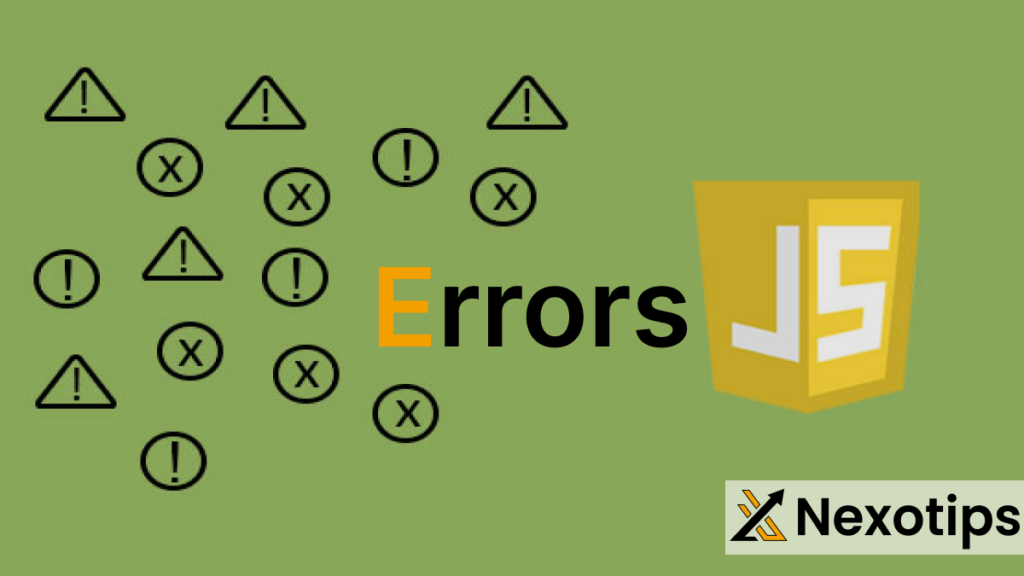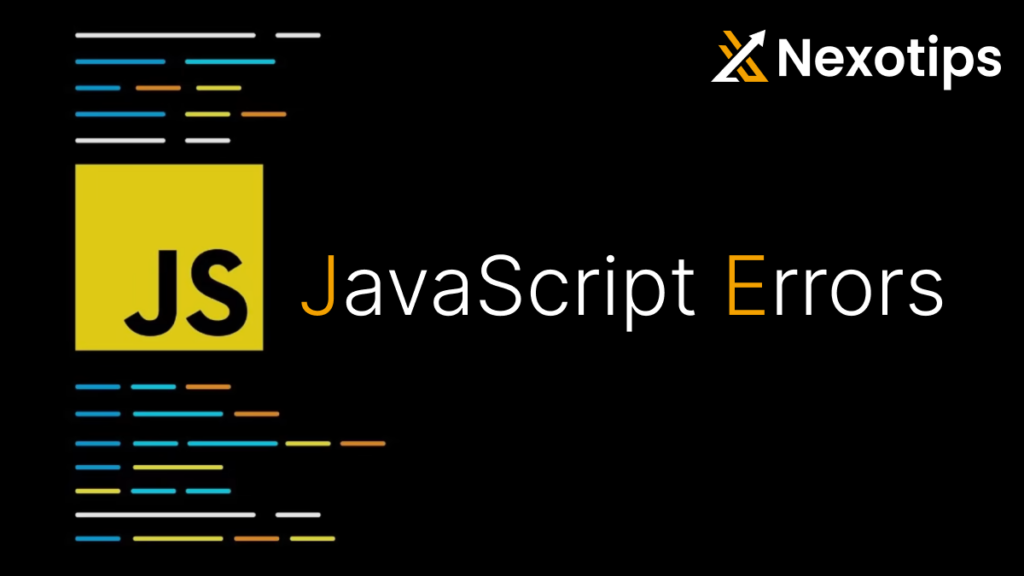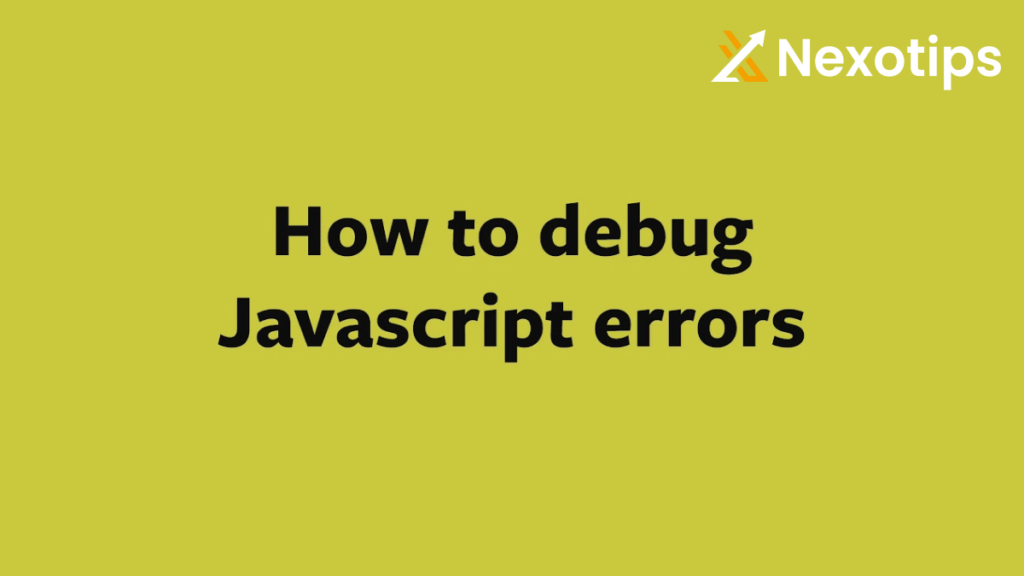
Understanding and Handling JavaScript Errors: A Comprehensive Guide for 2024.
JavaScript is an incredibly flexible and robust programming language that plays a vital role in contemporary web development. It empowers developers to craft dynamic and engaging web applications. However, like any other programming language, JavaScript is not without its pitfalls. Errors are an inevitable part of the development process, and understanding how to handle them effectively is essential for building robust and resilient applications.
In this comprehensive guide, we will delve deep into the world of JavaScript errors. We will explore the different types of errors, common error scenarios, debugging techniques, and best practices for error handling. By the end of this guide, you’ll have a solid understanding of how to manage JavaScript errors and ensure your applications run smoothly.
Table of Contents
1. Introduction to JavaScript Errors

Errors are an inevitable aspect of the programming process. They arise when the code fails to execute properly, either due to syntax problems, incorrect logic, or unforeseen situations. In the realm of JavaScript, errors can be broadly classified into three primary types: syntax errors, runtime errors, and logical errors. Each error type possesses its own distinct traits and necessitates distinct approaches for effective handling.
Syntax errors are the most common type of error in programming and occur when the code violates the rules of the programming language. These errors are usually detected by the compiler or interpreter during the compilation or interpretation process. Syntax errors can include missing or misplaced punctuation, misspelled keywords, or incorrect variable declarations. When a syntax error is encountered, the code cannot be executed until the error is fixed.
Runtime errors, also known as exceptions, occur during the execution of the program. These errors are often caused by unexpected conditions or events that the programmer did not anticipate. Runtime errors can include division by zero, accessing an undefined variable, or trying to perform an operation on incompatible data types. When a runtime error occurs, the program may crash or produce incorrect results. To handle runtime errors, programmers can use error handling techniques such as try-catch blocks to catch and handle the exception gracefully.
Logical errors, also known as bugs, are the most challenging type of error to detect and fix. These errors occur when the code does not produce the expected output due to flawed logic or incorrect algorithms. Logical errors can be caused by incorrect conditional statements, incorrect loop iterations, or incorrect variable assignments. Unlike syntax and runtime errors, logical errors do not generate error messages or crash the program. Instead, they lead to incorrect program behavior or produce unexpected results. Debugging techniques, such as using print statements or a debugger, are commonly employed to identify and fix logical errors.
To effectively handle errors in JavaScript, programmers need to understand the different error types and their characteristics. Syntax errors can be prevented by carefully following the language’s syntax rules and using proper coding conventions. Runtime errors can be handled by implementing error handling mechanisms, such as try-catch blocks, to gracefully handle exceptions and prevent program crashes. Logical errors require thorough testing and debugging to identify and fix the flawed logic or algorithm. By understanding and addressing each error type appropriately, programmers can improve the reliability and functionality of their JavaScript programs.
2. Types of JavaScript Errors

Syntax Errors
Syntax errors are the most basic type of error and occur when the JavaScript engine encounters code that it cannot parse. These errors are usually caused by typographical mistakes, missing punctuation, or incorrect use of language constructs. Syntax errors prevent the code from being executed, and the browser will typically display an error message indicating the line and nature of the issue.
Example:
// Missing closing parenthesis
function sayHello() {
console.log("Hello, world!";
}Runtime Errors
Runtime errors, also known as exceptions, occur when the code is syntactically correct but fails to execute during runtime. These errors can be caused by various factors, such as trying to access a variable that has not been defined, performing operations on incompatible types, or failing to handle asynchronous operations properly.
Example:
// Trying to access a property of an undefined variable
let person;
console.log(person.name);Logical Errors
Logical errors are the most challenging to detect and fix. These errors occur when the code executes without any syntax or runtime errors, but the logic is incorrect, leading to unexpected or incorrect results. Logical errors do not produce error messages, making them difficult to identify.
Example:
// Incorrectly calculating the sum of an array
let numbers = [1, 2, 3, 4, 5];
let sum = 0;
for (let i = 0; i <= numbers.length; i++) {
sum += numbers[i];
}
console.log(sum); // NaN (Not a Number) due to array out-of-bounds access3. Common JavaScript Error Scenarios
Understanding common error scenarios can help you prevent and quickly diagnose issues in your code. Let’s explore some typical situations where JavaScript errors often occur.
Undefined Variables
Accessing variables that have not been declared or initialized is a common source of errors. JavaScript is a dynamically typed language, which means that variables do not have a fixed type and can be reassigned to different types of values. However, attempting to access an undefined variable will result in a ReferenceError.
Example:
// Trying to access an undeclared variable
console.log(userName); // ReferenceError: userName is not definedNull References
Another frequent error scenario involves attempting to access properties or methods of a null or undefined value. This results in a TypeError.
Example:
// Trying to access a property of null
let user = null;
console.log(user.name); // TypeError: Cannot read property 'name' of nullType Errors
Type errors occur when an operation is performed on an incompatible type. JavaScript is loosely typed, meaning type coercion can happen automatically, but certain operations still require specific types.
Example:
// Attempting to call a non-function type
let greeting = "Hello";
greeting(); // TypeError: greeting is not a functionRange Errors
Range errors are less common but can occur when a value is not within the allowed range. This typically happens with numeric values or string operations.
Example:
// Creating an array with an invalid length
let arr = new Array(-1); // RangeError: Invalid array length4. Debugging JavaScript Errors

Effective debugging is essential for resolving JavaScript errors. Modern browsers come equipped with powerful developer tools that make it easier to diagnose and fix issues.
Using Browser Developer Tools
Browser developer tools provide a suite of features for inspecting, debugging, and profiling your web applications. These tools typically include a console for logging messages, a debugger for setting breakpoints and stepping through code, and network panels for monitoring HTTP requests.
Example:
To open the developer tools in Chrome, press Ctrl + Shift + I (Windows/Linux) or Cmd + Option + I (Mac). You can then access the “Console” and “Sources” tabs to start debugging your code.
Console Logging
Using console.log() is one of the simplest and most effective ways to debug JavaScript code. By printing variable values and execution flow to the console, you can gain insights into what your code is doing and identify where things go wrong.
Example:
let user = { name: "Alice", age: 25 };
console.log(user);Debugger Statements
The debugger statement is a powerful tool that allows you to pause code execution and inspect the current state of the program. When the JavaScript engine encounters a debugger statement, it will stop execution and open the debugging interface.
Example:
let user = { name: "Alice", age: 25 };
debugger;
console.log(user);5. Error Handling Techniques
Handling errors gracefully is crucial for creating a robust application. JavaScript provides several mechanisms for catching and handling errors.
Try…Catch…Finally
The try...catch...finally statement allows you to catch errors and execute cleanup code regardless of whether an error occurred.
Example:
try {
let result = riskyOperation();
console.log(result);
} catch (error) {
console.error("An error occurred:", error);
} finally {
console.log("Cleanup code runs regardless of success or failure.");
}Custom Error Handling
Creating custom error classes allows you to throw and catch specific types of errors, providing more control over error handling.
Example:
class CustomError extends Error {
constructor(message) {
super(message);
this.name = "CustomError";
}
}
try {
throw new CustomError("Something went wrong!");
} catch (error) {
if (error instanceof CustomError) {
console.error("Custom error caught:", error.message);
} else {
console.error("Unexpected error:", error);
}
}Promises and Async/Await
Handling errors in asynchronous code requires a different approach. Promises provide a mechanism for handling asynchronous operations and their errors.
Example:
fetch("https://api.example.com/data")
.then(response => response.json())
.then(data => console.log(data))
.catch(error => console.error("Fetch error:", error));With async/await, you can write asynchronous code that looks and behaves more like synchronous code, making error handling more straightforward.
Example:
async function fetchData() {
try {
let response = await fetch("https://api.example.com/data");
let data = await response.json();
console.log(data);
} catch (error) {
console.error("Fetch error:", error);
}
}
fetchData();6. Best Practices for Error Handling
Following best practices for error handling can help you write more maintainable and resilient code.
Avoiding Common Mistakes
Some common mistakes to avoid include:
- Swallowing errors without logging them.
- Throwing generic error messages that do not provide useful information.
- Ignoring asynchronous errors.
Graceful Degradation and Fallbacks
Ensure your application can degrade gracefully when errors occur. Provide fallbacks or default behaviors to maintain functionality.
Example:
try {
let data = riskyOperation();
displayData(data);
} catch (error) {
console.error("Operation failed, using fallback data.");
displayData(defaultData);
}User-Friendly Error Messages
When errors occur, display user-friendly error messages that help users understand what went wrong and what they can do about it.
Example:
try {
let data = riskyOperation();
displayData(data);
} catch (error) {
displayErrorMessage("An unexpected error occurred. Please try again later.");
}Conclusion
Handling JavaScript errors effectively is a fundamental skill for any web developer. Errors, whether they are syntax, runtime, or logical, can disrupt the functionality of your application and degrade the user experience. By understanding the different types of errors and common error scenarios, you can diagnose issues more efficiently.
Debugging tools, such as browser developer tools and console logging, are invaluable for identifying and resolving errors. Additionally, using techniques like try...catch...finally, custom error handling, and properly managing asynchronous code with Promises and async/await can significantly enhance your error handling strategy.
Adhering to best practices, such as avoiding common mistakes, ensuring graceful degradation, providing user-friendly error messages, and implementing robust logging and monitoring systems, will help you build more resilient and maintainable applications. These practices not only improve the reliability of your code but also enhance the overall user experience by handling errors gracefully and informatively.
In the dynamic and evolving landscape of web development, mastering JavaScript error handling equips you with the tools and knowledge to create applications that are not only functional but also resilient and user-friendly. Embrace these techniques and practices to ensure your code is robust, your applications are reliable, and your users are satisfied.
Our Others : Unleashing the Power of Raspberry Pi: A Gateway to Innovation
Others : JavaScript Operators With Example For The Best Practices For 2024.

One thought on “Understanding and Handling JavaScript Errors: A Comprehensive Guide for 2024.”